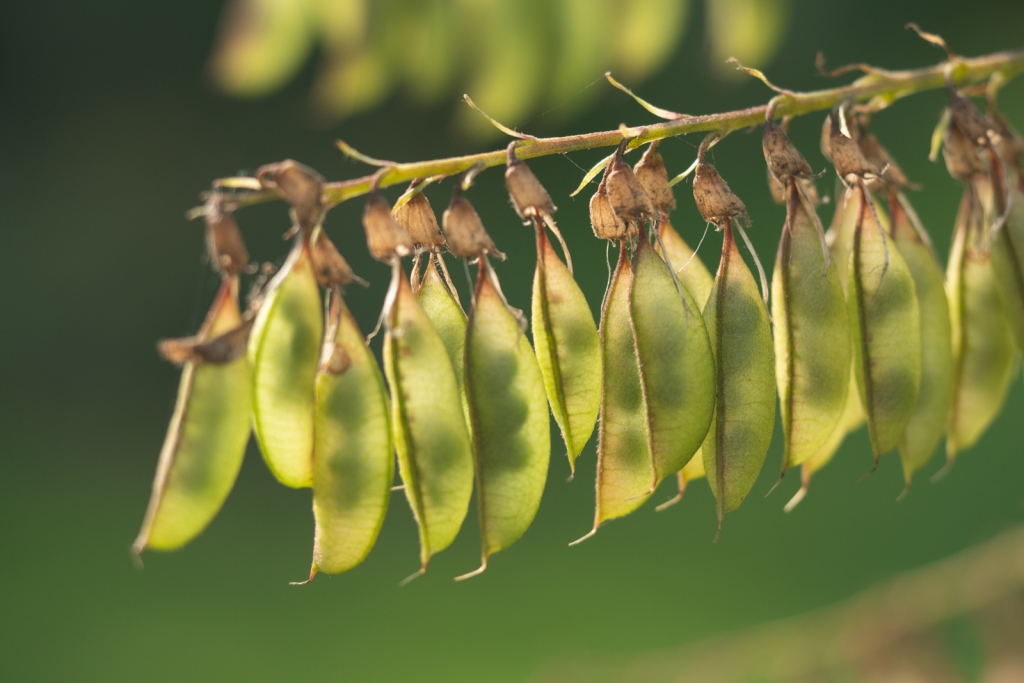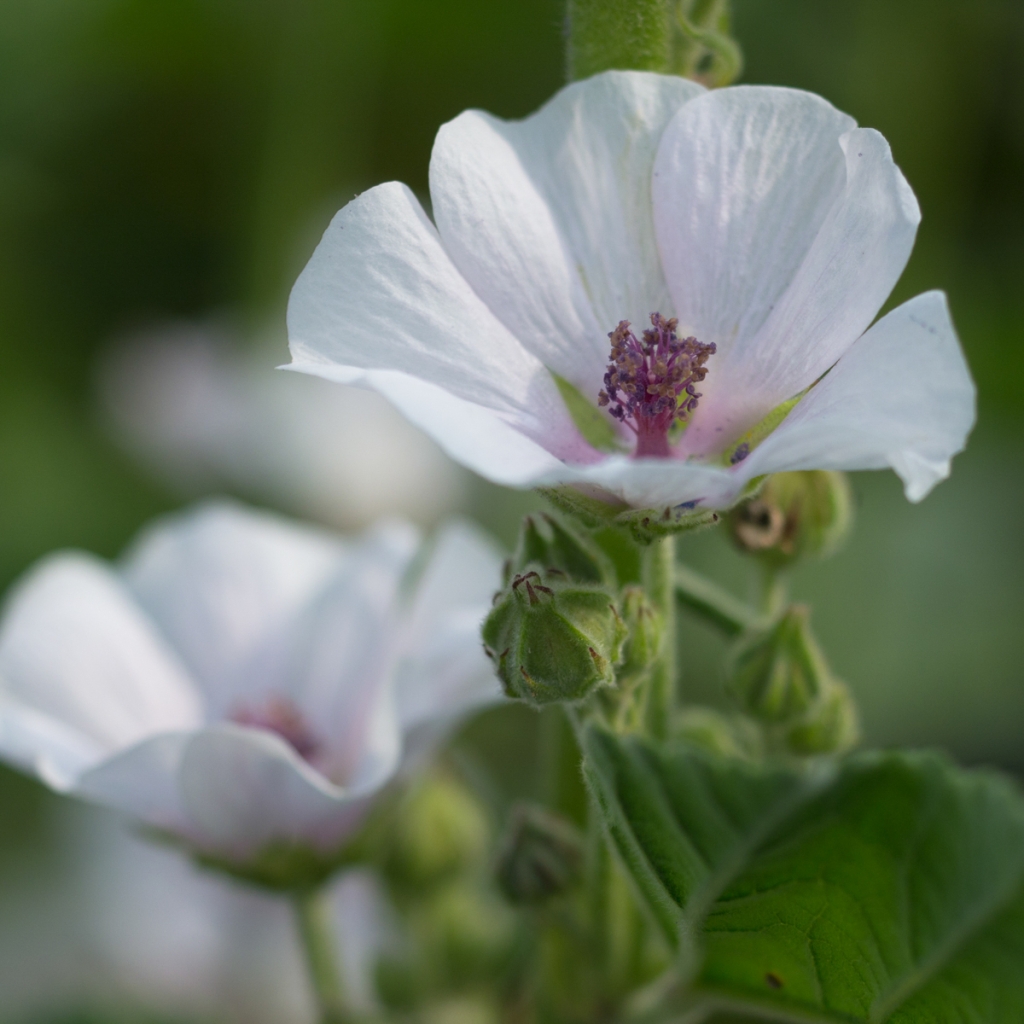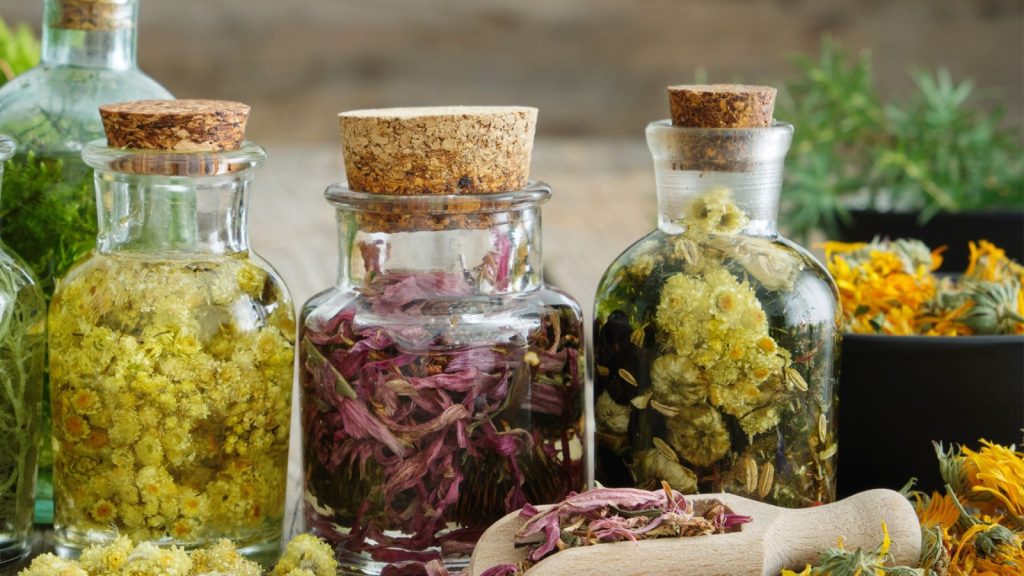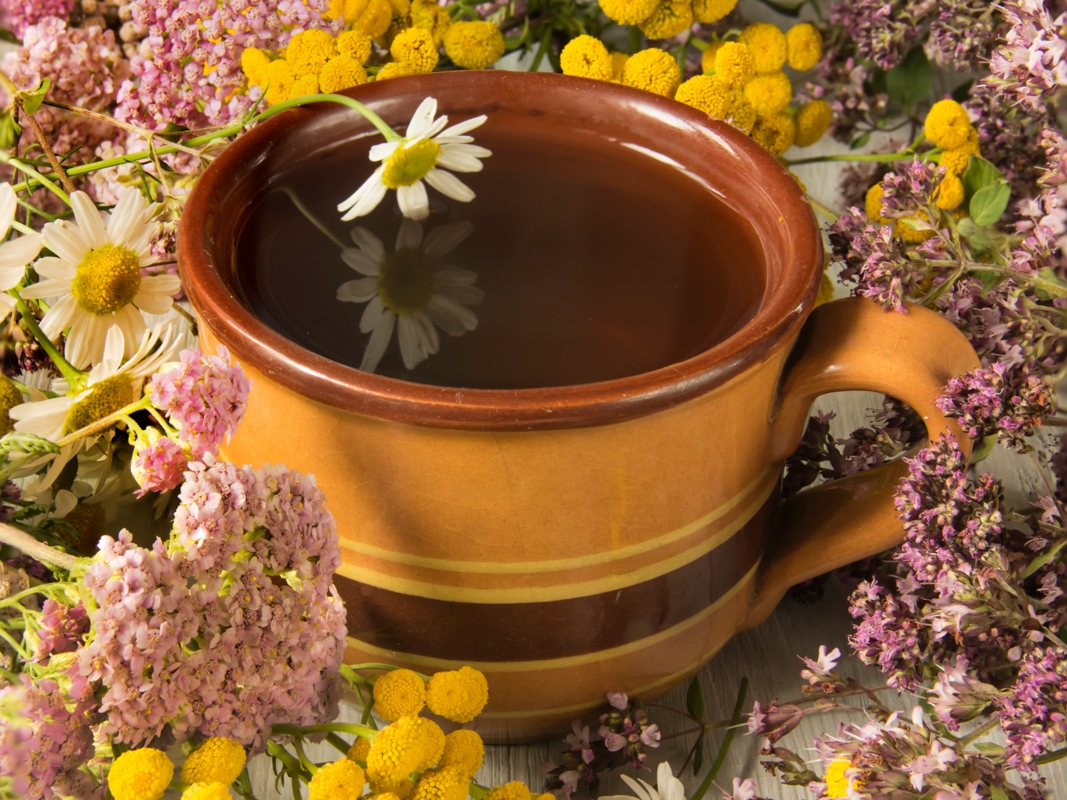How to use and make herbal remedies at home for your self-care
After growing herbs, making herbal concoctions is one of the best things you can do; it’s fun, educational, good for you, empowering, cost-effective and all-round rewarding.
There are a few things to know before, so you can use and make your herbal remedies at home.
Using herbal remedies
Whilst herbs can be delicious and effective to take, they can also have strong flavours and need to be used in suitable ways, in appropriate amounts. So, like all sorts of foods and spices, they do need appropriate handling and use. Common sense is best applied when using anything for the first time. For treating any specific health conditions we always recommend seeing a professional clinical herbalist. Herbal Reality has a useful resource page on where you can find a herbalist.
The herbal remedies we use today represent only a tiny proportion of the plant species growing around the world. Something like 30,000 of the 400,000 flowering plants in the world have been used as foods & medicines. We know that as humans evolved we adopted the use of those plants that were the most effective and with minimum adverse effects. Short-term safety at least is built into these millions of human experiences through the ages.
Further, the generally benign qualities of these herbs arise from their complexity. The existence of the 100s of secondary plant metabolites in each species – the tasty and not-so-tasty aromatic oils, polyphenols, tannins, mucilages, saponins, or other constituents, – buffer the effect of more active compounds, which are often in any case present only in low levels. It’s the synergy within the plant that creates the balance. You could say that our human relationship with nature has been based on us being exposed to micro-doses of tens of thousands of phytochemicals on a daily basis. We know each other.


Most importantly, the way plants work within us is harmonious with our natural metabolic pathways. The herbs are used ideally to nudge healing responses in the body rather than directly attack any symptoms; a bitter flavour stimulates digestive activity; a hot spice invigorates both digestion and circulation; laxatives encourage bile, bowel and urinary elimination; expectorants, diuretics, hepatics and lymphatics produce their own detoxifications, and so on. We trust the body to look after its affairs and seek only to help it on its way without disturbing it unduly. Correct use of herbs gently supports the innate healing wisdom that helps us find whole health and live well every day.
Everyone will benefit from including some of these well-known herbs to support digestion, circulation, immunity and the nervous system. A few cups of tea or some sprinkled on food should be a part of the daily routine. For more seasonal bumps and bruises you can explore using tinctures, salves and massage oils. Always ask yourself – “Where are the herbs?”. To find out how to prepare various herbal remedies find more recipes here.
Making your herbs; the art and science of herbal preparation
The remarkable art and science of herbal preparation is a world unto itself, often throwing up more questions than answers. How do you extract the best out of the plant? Should the water be hot or cold? Should it be an extract in high or low alcohol? Why are some herbs extracted with vinegar and some in oils? What is a glycerine?

Whatever form you take your herbs in, the whole intent of making a herbal remedy is to harness the power of the plants by gathering the maximum aromas, colours and unique characteristics of each plant into your remedy. Of course, this means you need top-quality herbs as your finished creation will only be as good as the quality of the herbs you start with.
There are some simple rules, and with some prior knowledge and practice you can easily learn how to skillfully draw the healing properties of the herbs into a form that is easy to take and be safely preserved. Whether it’s a cup of tea, a tincture, a syrup or an infused oil, each plant needs appropriate handling to get the best out of them.
You will need to be very precise about the species you are using and how the specific part of it is used.
- You will need to understand about different solvents such as water, alcohol, glycerine, oils, vinegars.
- You will need to keep accurate records.
- You will need good hygiene.
- You will need jars (various sizes), scales, measuring jugs, spoons (wooden and metal), sieves (metal), funnels, muslin cloth, labels, pans.
- You will need a good herbal cupboard stocked with glycerine, alcohol, wax, olive oil, honey, vinegar and other extractive delights.
Start by asking yourself a few questions:
- What do I want to help?
- What species is good for this issue?
- How is this species best extracted?
- What solvent should I use?
- What proportions do I use?
For example; I want to support my digestion; chamomile is good for this; it’s extracted well in hot water and alcohol; let’s go for water and make a cup of tea with 2g of flowers in 200ml of freshly boiled water.

So how do we work out the best way to extract the active constituents of the herbs? A little bit of plant chemistry is helpful here. It will help you understand how to harness the best from the herbs.
Think of extraction as a continuum between two extremes;
Some plant compounds love water; they are hydrophilic and water-soluble, like the mouth-puckering and teacup-staining tannins in a cup of tea or the sweet glycyrrhizin in licorice;
Others need alcohol to be released, like the bitter alkaloid compounds found in gentian and in many a digestive bitter aperitif;
And some are fat soluble and hydrophobic – such as the red pigmented hypericin found in infused St John’s Wort oil.
Glycerine acts like an alcohol but is less stable so must be at a higher percentage to remain shelf-stable.
Vinegar extracts work like water and alcohol with a specific ability to extract some alkaloids.
A simple way of thinking about it is that like will attract like; fats will attract fatty properties from plants – which is why cooking essential oil-rich spices in oil makes the food much more delicious; and water will attract the more water-loving elements such as the colourful chlorophyll pigments and sweeter polysaccharides.
More in-depth herbal alchemy for the chemists
What compounds are extracted by what medium comes down to the polarity continuum: some molecules are totally non-polar, some have low polarity, others are just a little polar, some are moderately polar, and so on. The main significance of this is that substances with similar polarities can dissolve within one another: Oil and water don’t mix, because water molecules are very polar, and oil molecules are almost non-polar. On the other hand, water and ethanol do intermix, because their polarities are somewhat similar. In the same fashion, polar solvents (e.g., water, ethanol, glycerin – also called glycerol) will dissolve molecules with a polarity similar to their own. Low-polarity molecules will generally dissolve in oils; and polar molecules will dissolve in polar solvents like water and ethanol.
That’s why there are so many types of pastes, percolates and poultices as herbs need different mediums to reach the parts that other herbal extracts can’t reach.

